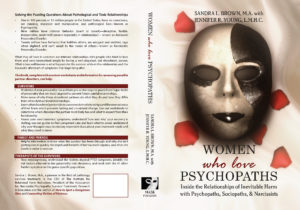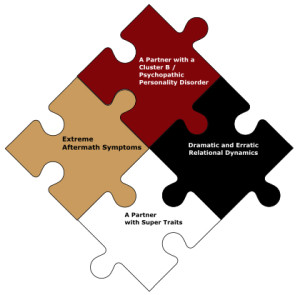This week we talk about how women can level the playing field in court with a pathological. This could be related to a divorce, separation, restraining order, or child custody. If you have PTSD, the courts are mandated to offer you special accommodations while in court to protect you, and to help your level of functioning due to the PTSD.
In order to do that, you must legitimately have PTSD, be diagnosed and have an Accommodations Report prepared by a professional that is presented to your state’s ADA (Americans with Disabilities Act) Coordinator’s Office. From there, special accommodations are granted. The range and what the accommodations are, are listed in the column, “Helping Women Find Effective Strategies for Court.”
First of all, PTSD is a trauma disorder. If you are given the diagnosis, it already implies you have been traumatized. You are going to court regarding your traumatized relationship, so it fits and supports your argument in court, as well as the symptoms that have arisen because of this relationship. If he produced trauma, this needs to be said. If we want the court to understand pathology, we need to teach through our own experiences and relationships if we want the court system to change.
Second, PTSD does not necessarily have the type of stigma you may fear. Our vets that come home from war more often than not have PTSD. Fighting for our country is honorable—they were doing a good thing, and yet were damaged from their experience. The same is true for you.
One of our previous presidential candidates has PTSD. Firefighters and law enforcement that bravely saved many on 9/11 have PTSD. Missionaries helping the poor in other countries have PTSD. Social workers working in dangerous situations have PTSD.
I have PTSD. I have lived over 25 years with it. I openly discuss having the disorder—through no fault of my own. I acquired PTSD from seeing my father’s murder scene. I have worked with others that have had PTSD now for 20+ years. And because I am a survivor, I live with the effects of chronic PTSD daily. I know how it has changed me and my life, my abilities, my health, and my endurance. I have seen in hundreds of others how it has affected their lives—sometimes long-term.
If you have it, say it. Nothing starts healing until we acknowledge it. It is what it is. Some worry that they will be labeled with mental illness if the court acknowledges their PTSD. Well, let’s think about that… do you think a pathological is going to go into court and NOT say you are crazy? You don’t think he will argue every point of your illness, behavior, or symptoms (whether they are true or not) in order to win? You don’t think he’s GOING to use some kind of emotional disorder argument? OF COURSE HE IS—that’s what pathologicals DO!! So, in order to prevent being labeled something far worse than PTSD, if you have PTSD, let IT be the label instead of something else that can greatly impair your ability to get rehabilitative alimony, custody of your children, etc.
Having a PTSD diagnosis before court can greatly help HOW FAR the pathological can go in trying to make you look mentally ill. PTSD is NOT a mental illness. Having a PTSD diagnosis may help prevent them from labeling you mentally ill with other more debilitating types of mental illness.
So don’t shun the PTSD diagnosis if you have it. It may prevent you from being labeled something far worse.
(**If we can support you in your recovery process, please let us know. The Institute is the largest provider of recovery-based services for survivors of pathological love relationships. Information about pathological love relationships is in our award-winning book, Women Who Love Psychopaths, and is also available in our retreats, 1:1s, or phone sessions. See the website for more information.)













